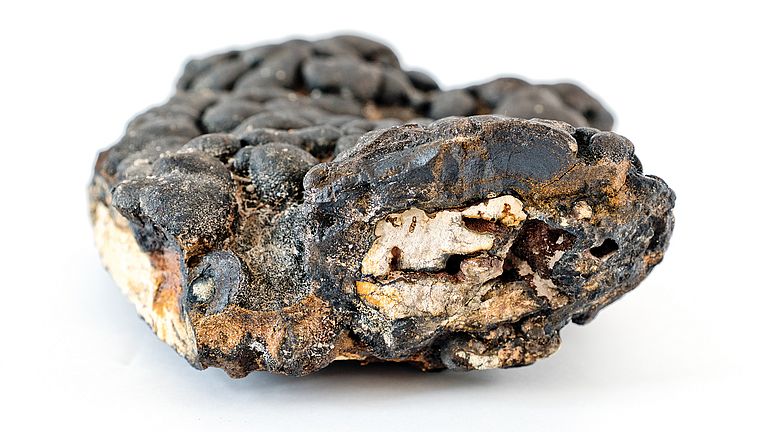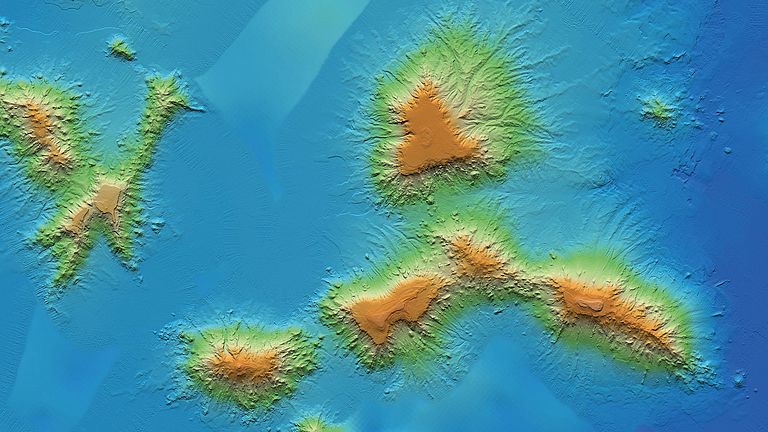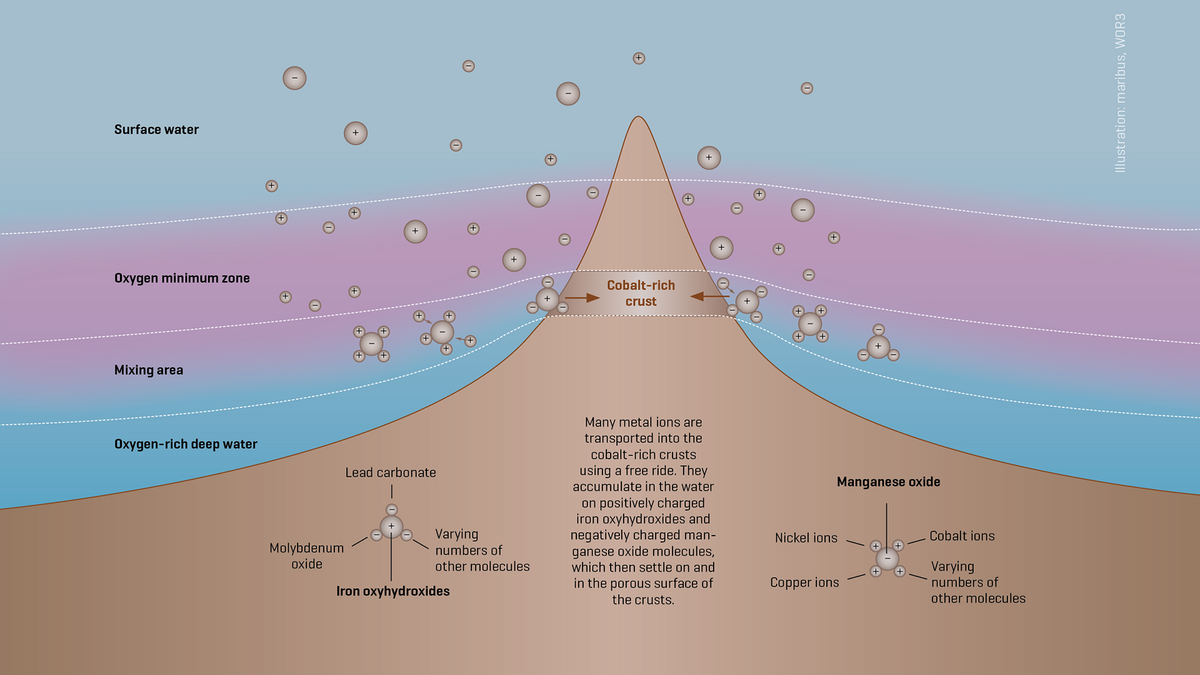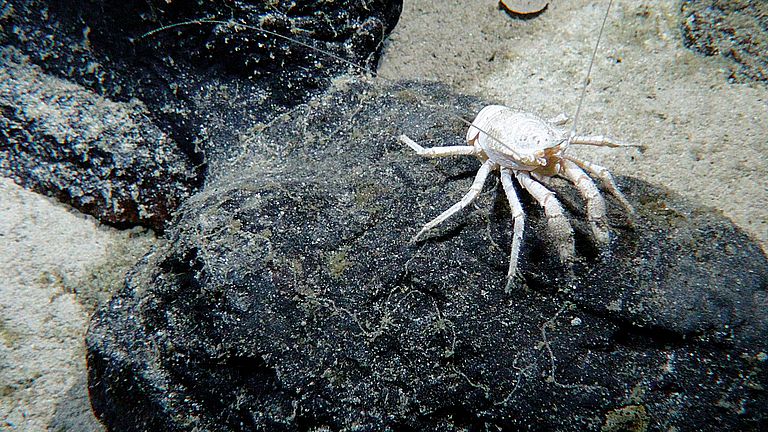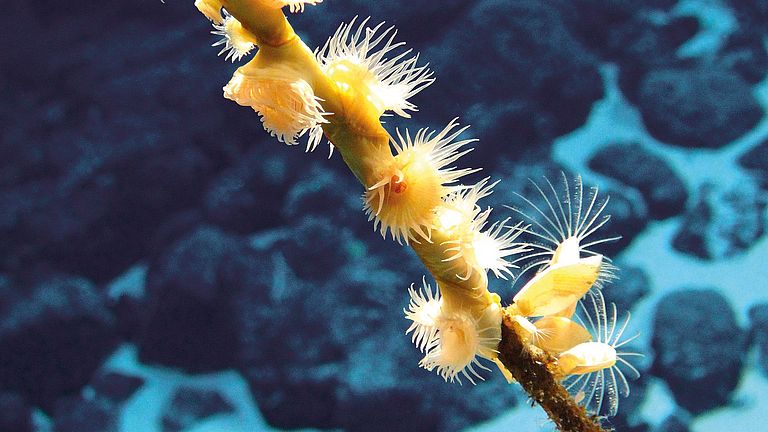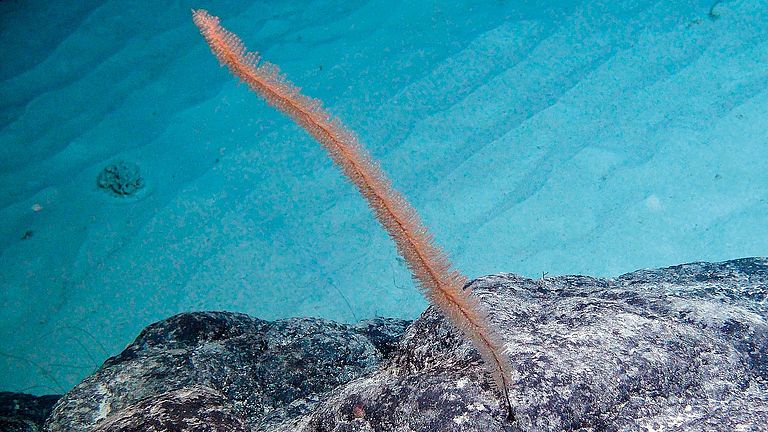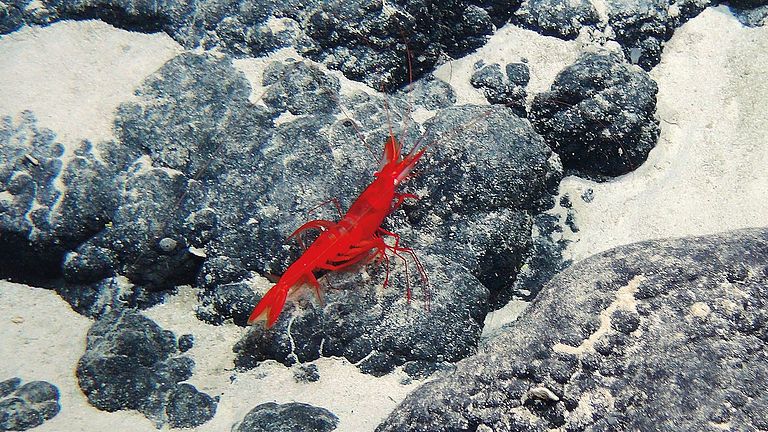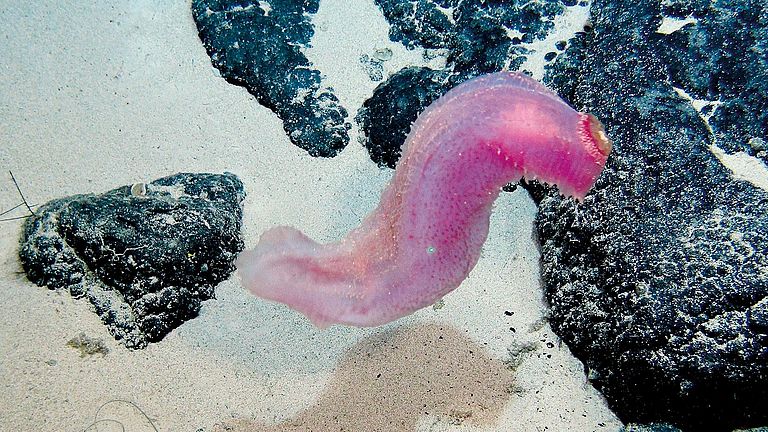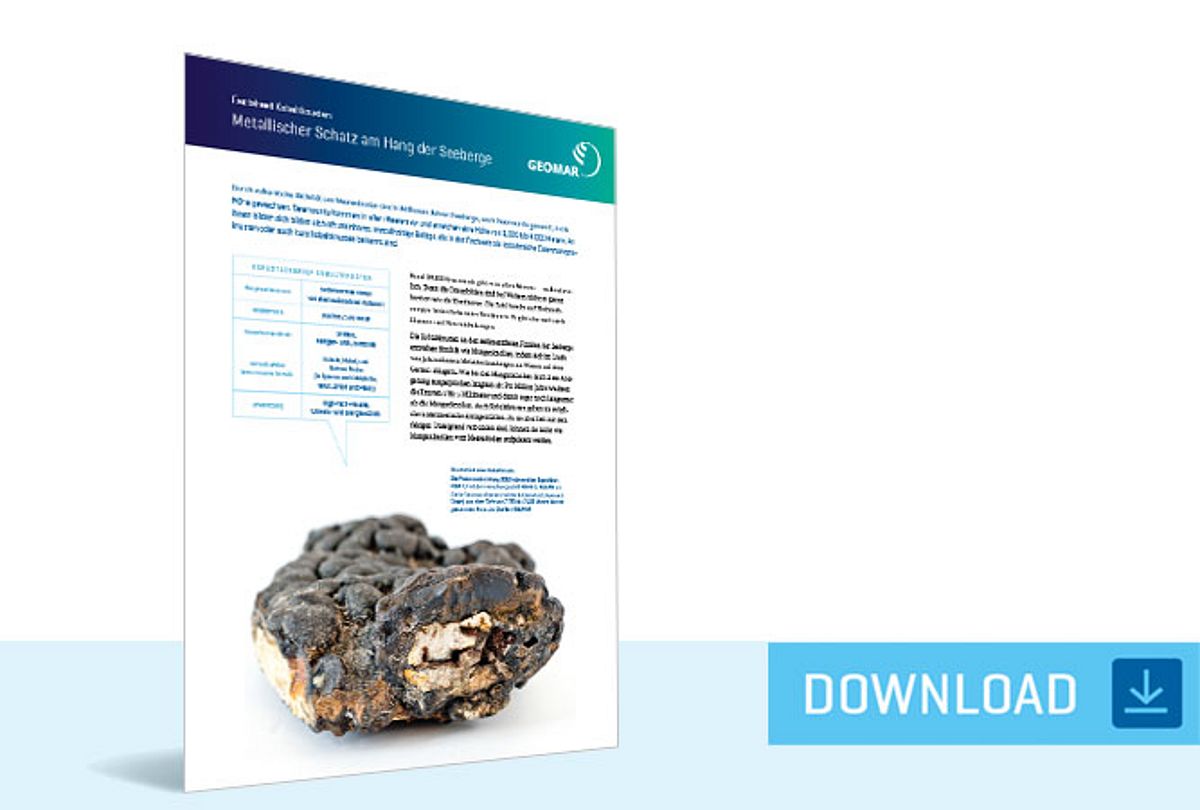GEOMAR Helmholtz Centre for Ocean Research Kiel
Communication and Media
Fon 0431 600-2807
Mail media(at)geomar.de
Cobalt-rich Crusts – Ore Treasure on the Slope of Seamounts
Due to volcanic activity on the seabed, seamounts have grown in height over millions of years. Seamounts occur in all oceans and commonly reach heights of 1,000 to 4,000 metres. They often form solid, metalliferous layers, which are known to experts as cobalt-rich iron-manganese crusts or cobalt-rich crusts for short.
There are around 33,000 seamounts in all oceans - probably. Because the ocean floors are by far not as precisely mapped as the continents. The figure is based on projections of previously known structures. So there are still many opportunities for new discoveries.
The cobalt-rich crusts on the sediment-free flanks of seamounts form in a similar way than manganese nodules, that is by deposition of metal compounds on the rock surfaces over millions of years. As with manganese nodules, this deposition takes place very slowly: per one million years, the crusts commonly grow 1 to 5 millimetres and thus even slower than the manganese nodules.
Cobalt-rich crusts are a promising seabed resource as they contain large amounts of cobalt, nickel, manganese and other metals, some of which could exceed the contents of land deposits. However, there are only a few occurrences in international waters for which exploration licenses have been applied for. Since cobalt-rich crusts are firmly attached to the rocky substrate, they cannot simply be picked up from the seabed like manganese nodules, but would have to be separated from it at great expense. The direct environmental impact of mining is assumed to be similarly serious to that of massive sulphides and manganese nodules, although, compared to manganese nodules, only smaller mining areas would be affected.
Formation of Cobalt-rich Crusts
Cobalt-rich crusts occur on all exposed rock surfaces at submarine elevations, especially on seamounts. The rock surfaces absorb metals from the surrounding seawater and, over a long period of millions of years, form coatings of iron and manganese oxides, the thickness of which ranges from a few millimeters to a few decimeters, depending on the age of the seamounts.
Some seamounts behave like gigantic stirring rods in the sea, which create big vortices. These vortices also contain metal compounds, which are deposited on the rock surfaces. Another important requirement for the formation of cobalt-rich crusts is that the rock or the growing crusts are free of sediments. The conditions at seamounts are ideal for this: the currents carry away the fine sediments and keep the rock and the crusts clean. Cobalt-rich crusts can be found at water depths of 600 to 7,000 metres. However, the thickest and most valuable crusts are found in the upper part of the seamount slopes, where strong currents prevail. On average economically valuable crusts lie in water depths of 800 to 2,500 metres near the oxygen minimum zone.
The cobalt-rich crusts form when metal ions in the water react with oxygen to form oxides, which are deposited on the rock surfaces of the seamounts. However, oxides can only form where the seawater contains sufficient levels of oxygen. Paradoxically, in fact the thickest cobalt-rich crusts can be found on seamounts where the top is close to the oxygen minimum zone, an area where seawater contains the least oxygen. This contradiction can be resolved: Since very little oxygen is present in the oxygen minimum zone, the free metal ions accumulate in the oxygen-poor water. At seamounts, however, oxygen-rich deep water flows up from the seabed. This creates a mixing zone in which metal-oxides can form, which then precipitate on the rock surfaces and form crusts over time.
Biodiversity at Seamounts
Underwater seamounts provide habitats for numerous organisms in the deep sea. Diverse ecosystems, which are scientifically mostly not understood, exist at these oases of the oceans. The species composition at seamounts differs considerably from ocean to ocean. The images shown here show some organisms at seamounts in the Clarion-Clipperton-Zone in the Central Pacific.
The large biodiversity at seamounts is due to the special current situation: On the one hand, nutrients are retained by circulating currents near the top of the seamounts, on the other hand, nutrient-rich water is additionally carried up from greater depths by the currents surrounding the seamounts, which leads to increased plankton growth.


